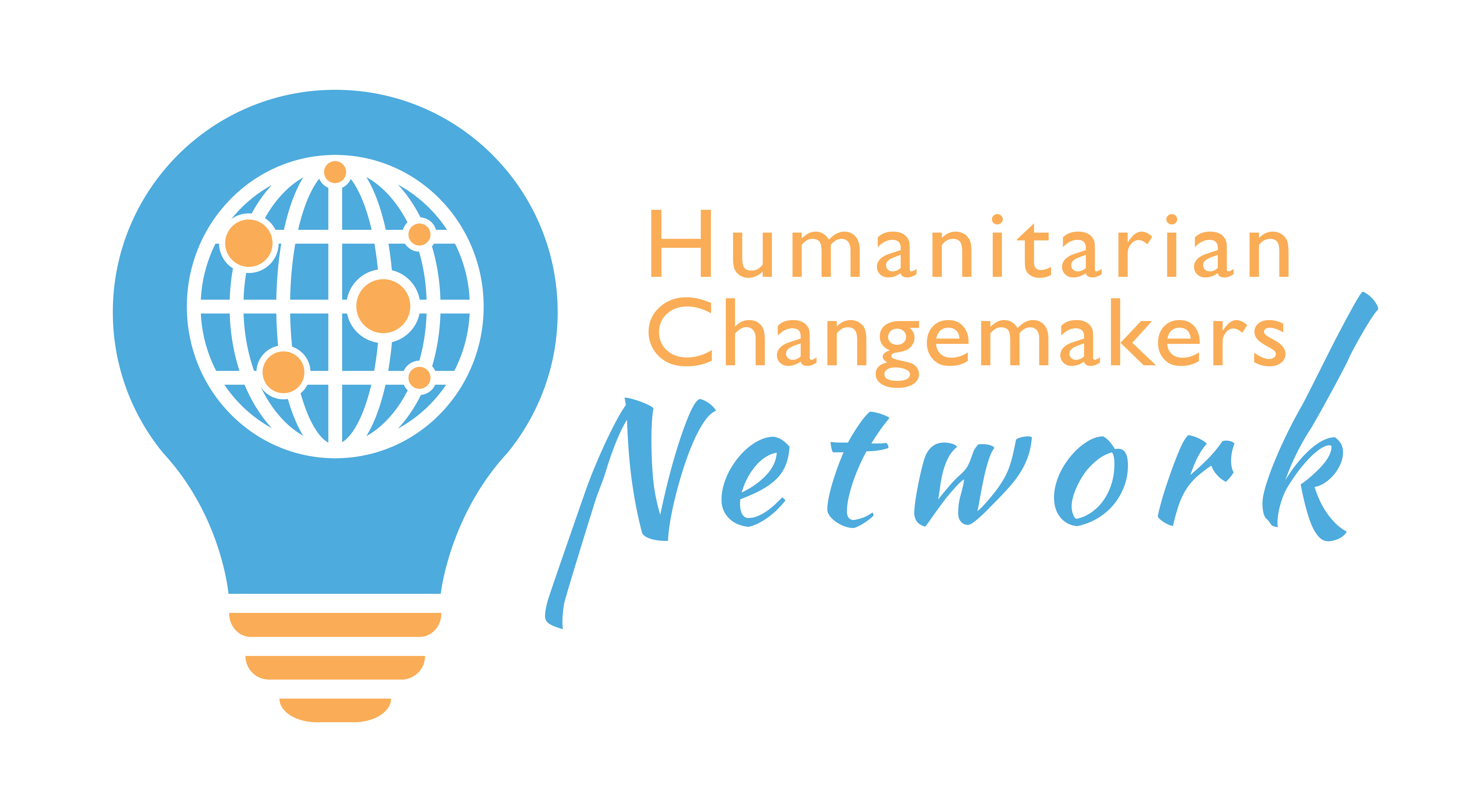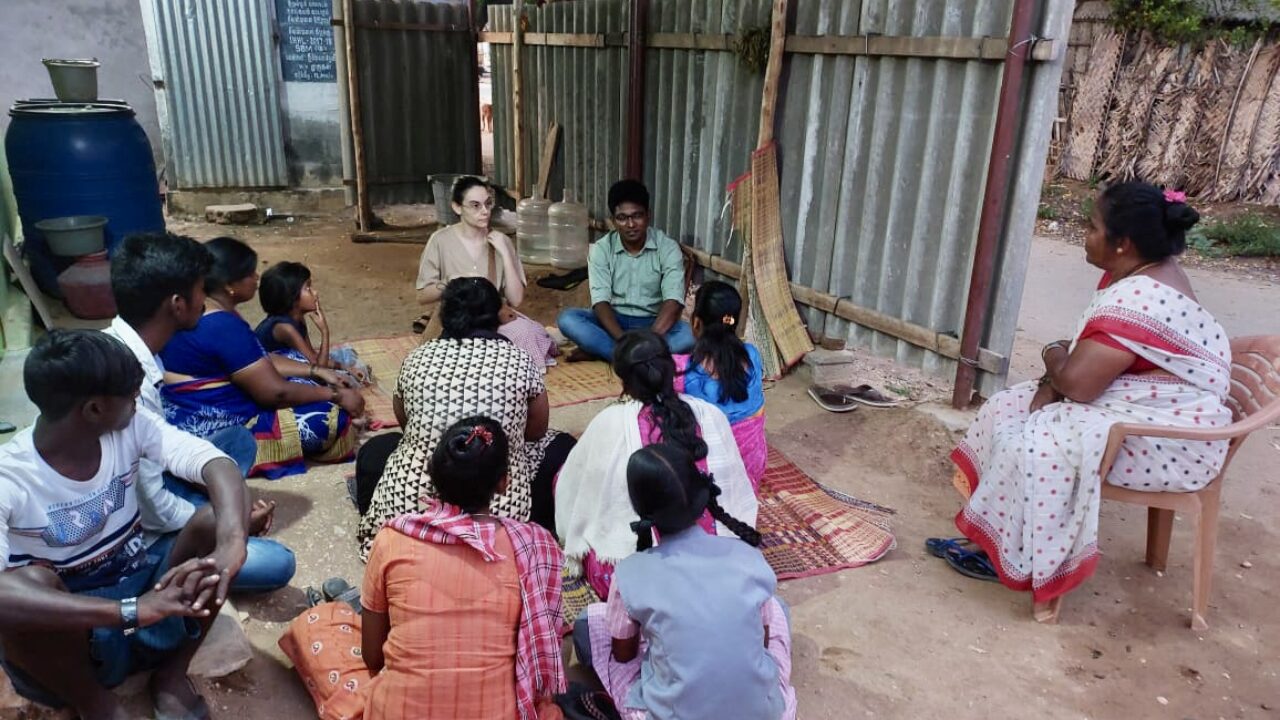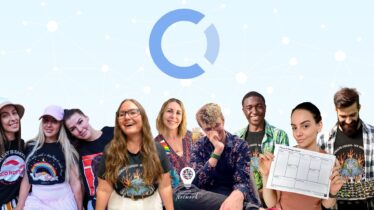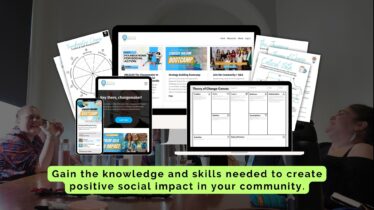The Left vs Right, Poverty as Empowering, & a Defence of Child Sponsorship: profound insights from my PhD research
This week I had a few books I needed to push through as part of my PhD research, which is about women’s empowerment and gender equality in rural development across India. My research has a deep focus on ontology (I’ll spare you the philosophical details,) and I was surprised to find that one of the most profound insights I’ve had about social change in a while came from a philosophical passage about dualisms.
One of the biggest pitfalls of modern Western philosophy, largely born out of the work of Descartes (old mate known for saying “I think, therefore I am,”) is that we now understand the world in a way that reduces reality to categories and dualisms. Mind vs body. Individual vs collective. Micro vs macro. Left vs right. But what we often forget is that these are just different sides of the same coin; one does not exist without the other. When we focus on, or identify more strongly with, one side of a coin, it can be easy to criticise or tear down those more aligned with the other. But once we take a step back, and observe both sides, we will find that while we might personally align with and promote one side, as a larger social movement, we should be hearing from, and embracing both sides.

This insight came when was reading a text by the late contemporary philosopher Roy Bhaskar, who pointed out that one of the biggest problems the left must face is that projects directed at advancing social change have been aimed at transformations in social structure, and the right faces the problem that projects aimed at change typically focused on changes at the level of the individual being. The reality is to change our social world we must target all levels (Bhaskar actually identifies 4 levels, but that’s an article for another day.) This seems rather obvious, and it’s something I already teach in our workshops, but it has also changed the way I think about certain approaches to change.
In our social change workshops, when I’m teaching students the different types of social change, I usually pose the following question:
If a house was burning down, do you think it would be more important for the fire department to go inside and help the people trapped inside the house, or do you think they should focus on putting out the fire, so it doesn’t spread to neighbouring houses and endanger more people?
Clearly, the answer is that they should do both. They are the different sides of the same coin. This example illustrates the importance of addressing both the larger structural issues and roots causes of an issue, and also helping the individuals who are caught up in the system and in need.
But what made me think differently about this, was the fact that I’ve never really made the connection that it is typically the left who are more aligned with the need to promote structural, systemic change, and it is typically the right who are more aligned with promoting individual, personal change. Once I was able to make this connection, I began to realise a few things about the different approaches to change typically taken by the left compared to the right. To illustrate, I want to draw upon one the example of child sponsorship.

The child sponsorship model is a popular way for individuals and organisations to get involved in international development. In this model, a donor makes a financial contribution to support a specific child or group of children in a developing country. The donation typically covers the costs of education, health care, and other basic needs. In return, the sponsor receives updates on the child’s progress and may even have the opportunity to correspond with them directly. While it remains one of the most popular ways to get involved in development interventions, the child sponsorship model has faced some criticism over the past few years. I fully acknowledge that if it isn’t done ethically, child sponsorship can indeed do more harm than good. But many of these criticisms are ubiquitous across the development sector, not just for child sponsorship programs. For every example of child sponsorship going wrong, there are in fact examples of development interventions that were aimed at change at the community or collective level going wrong.
First, there is the argument that child sponsorship promotes “paternalistic tendencies” through its funding model, leading to a Western/white-saviour complex. This is of course, a fair criticism of child sponsorship if not done ethically. But this criticism could be extended to the notion that any development intervention (including those aimed at structural change) lead by any large external group or international NGO perpetuates a form of neo-colonialism. The problem isn’t inherent in child sponsorship any more than it is inherent in the work of large international NGOs: the problem is the perpetuation of unbalanced power relationships, which could be present (or not) in each. Our attention must instead be focused on ensuring that all development interventions, regardless of the model they use, are genuinely empowering and avoid perpetuating unequal power distributions.

Second, there is the argument that people become child sponsors because of their need for a personal connection. It’s a fair claim, that the desire to engage with a development organisation on the basis of creating a personal connection is one that is selfish… but where does this notion that we must be disconnected from process come from? I will fully admit that I was once in the “child sponsorship is exploitative camp,” and this was my view several years ago. But I think there is an inherent problem in this notion that creating a personal connection with people is bad, when the alternative is that we give anonymously, or without forming any connection with the communities we are supporting. Does this not seem somewhat counterintuitive? Dehumanising the process, by creating a movement of anonymous relationship-free donors runs the risk of removing supporters from the process, and further leading to an us vs them mentality. Reflecting on my own experiences, I can now see that much of my criticism of certain approaches to development came from an internalised guilt associated with my ideas about the moral status of poverty.
While I can’t draw too many conclusions from my PhD research yet (I’m only halfway through my fieldwork,) nor can I make any general claims about empowerment and poverty as I believe they are quite contextual phenomena, I have uncovered some profound nuisances about poverty that really challenged some of my existing assumptions—assumptions which, I believe, came not only from my own experiences of privilege in the world as a Caucasian Australian-born woman, but from the vast literature on empowerment and development I have read as part of my research.

The women I have spoken to so far, have all told me that they do not find their poverty disempowering. In fact, some women have even gone so far as to say that they are empowered by the poverty that they have grown up around, as it motivates them to create better opportunities and future for children in their communities. They believe that opportunity for transformation, which they find in a state of poverty, is empowering. This blew my mind, not only because it contradicts much of the literature that claims reducing poverty is a necessary precondition to empowerment, but because it made me realise that poverty is not an inherently bad thing. Chances are, it’s more likely that those of us who have not grown up in a state of poverty that are more likely to perceive it as a negative thing. When we label certain things—like child sponsorship— as “poverty porn” for simply bringing the reality of poverty to people’s attention (assuming it done in a way that is not actually exploitative) we are further perpetuating the negative and misleading stereotype that poverty is a bad thing, which reinforces ideas that being in poverty, or asking for help, is something to be ashamed of. This argument is probably more a reflection of our own internalised beliefs, than it is of any specific model.

A final criticism of child sponsorship is based on the argument that the child sponsorship model promotes acts of charity, which is distinct from justice. Unlike in charity, actions that address justice “require a difficult look at who you are, what your role is in imbalanced relationships of power, and how you can act (sometimes at a cost to yourself) to undo the structural conditions that have produced that injustice,” says Simon Granovsky-Larsen, and international development scholar. There is no denying that development agencies that use child sponsorship models often don’t encourage sponsors to examine their role in global injustice, nor do they often attempt to reverse or undo the structural conditions that may have produced it. But this criticism, highlights the point I wish to make in this article. Charity and justice are two sides of the same coin. We should not be arguing for one without the other. Just as we need to both save people and stop the spreading of fire with our proverbial burning house, we also need to promote social change within the development sector that changes unjust structures AND supports those who are caught up in these structures.
The takeaway here for changemakers, is that we need to recognise when two seemingly conflicting ideas are actually two sides of the same coin. Next time you are going to be involved in an intervention, or find yourself criticising a particular approach, ask yourself these questions:
- Is this really an either-or debate, or should we be finding a way to make both approaches work?
- Is my criticism of this approach actually true, or is it more of a reflection of my own personal beliefs or assumptions?
- Is my criticism only applicable to this particular approach/model, or if I take a step back is it actually a larger problem that could be present in my preferred approach?
- How can we take a more networked approach in our work—recognising that different actors and approaches probably represent two sides of the same coin— to ensure that we are complementing each other, rather than competing with each other, to create change at all levels




